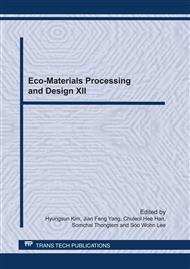p.501
p.505
p.509
p.513
p.517
p.521
p.525
p.529
p.533
A Novel Antimicrobial Nano-Composite Porous Material for Bone Repair
Abstract:
In this paper, isoniazid (INH)-loaded poly (ε-caprolactone) microspheres with a special microporous surface and relatively high drug loading were fabricated by an oil-in-oil (O/O) solvent evaporation method. Meanwhile the microspheres were produced by an oil-in-water (O/W) method for comparison. The technological parameters such as the concentration of surfactant, the volume of continuous phase and the quantity of the drug were investigated systematically. The microspheres morphology, their size distribution and the viscosity of both the dispersed and continuous phase were characterized. The results indicate that the O/O solvent evaporation method is a feasible approach to encapsulate micromolecular and hydrophilic drugs in PCL. This opens the door for INH-loaded microspheres able to release drugs and thereby improve the therapy of tuberculosis of bones and joints in the future.
Info:
Periodical:
Pages:
517-520
Citation:
Online since:
July 2011
Authors:
Price:
Сopyright:
© 2011 Trans Tech Publications Ltd. All Rights Reserved
Share:
Citation:


